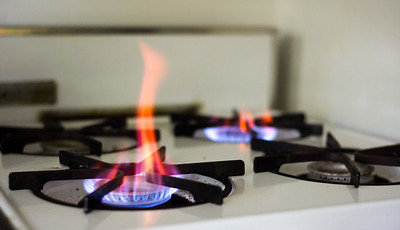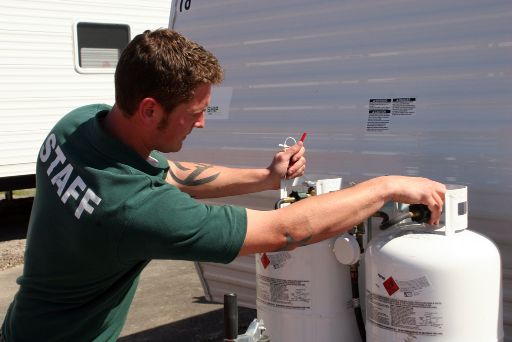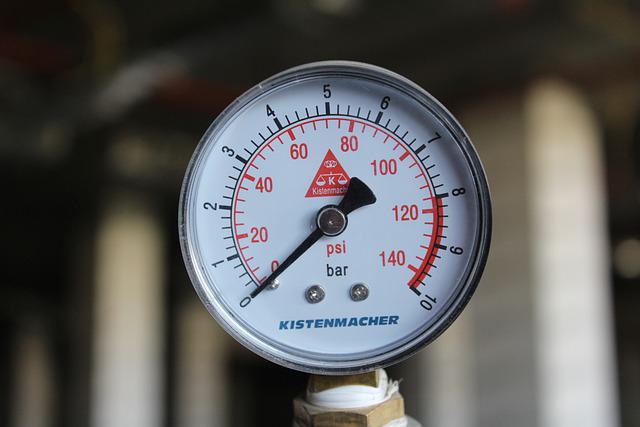
You probably know that natural gas stoves are common in homes like yours. They’re loved for their quick heating and cost savings. If you have a gas line at home, chances are you’re using one of these.
So, you’ve heard about using propane, especially if you’re off the grid or want a hotter flame. But is it really that simple to switch from one gas to another? We’ll get into that.
If you’re considering using propane in your natural gas stove, or just wondering if that’s even possible, you’re in the right place. We’ll walk you through the how-to’s and the what-not-to-do’s to keep you safe and your stove running smoothly. Stick with us to find out everything you need to know about switching your stove’s fuel source.
Can I use propane on a natural gas stove?
If you have a natural gas stove and want to use propane, you need to purchase a special kit. The kit will allow you to connect your propane tank to your natural gas stove. You need to be sure to follow the instructions that come with the conversion kit so that you do not damage your stove.
In most cases, all you need is a simple adapter kit that can be found at your local hardware store. The kit will come with everything you need to connect your grill to a natural gas line. follow the instructions that come with the kit, and be sure to check for leaks before using your grill. Once everything is properly connected, you’ll be able to enjoy all the benefits of grilling with natural gas. Please see video below.
Propane is a much more powerful fuel than natural gas, so you need to be careful when using it. Make sure that you do not use too much propane, or you could damage your stove.
What You Need to Consider in Converting Your Appliance
When considering converting a natural gas stove to propane, there are several factors and technical considerations to take into account. The conversion process involves specific modifications to the stove’s components to ensure safe and efficient operation. Below are some key points that you should be aware of:
A. Technical Feasibility of Converting Natural Gas Stoves to Propane
- Manufacturer’s Specifications:
- Check if the manufacturer supports conversion for your model.
- Some stoves are designed to be convertible, while others are not.
- Conversion Kits:
- Manufacturers may provide a conversion kit specific to your stove model.
- These kits typically include all necessary parts and instructions.
- Professional Assessment:
- A qualified technician can assess if your stove can be safely and effectively redesigned.
B. Necessary Modifications for Conversion
Orifice Adjustments:
- The orifices for propane are smaller due to its higher energy content.
- The conversion kit will usually include new orifices or instructions on adjusting the current ones.
- Pressure Regulation Changes:
- Propane operates at a higher pressure than natural gas.
- The stove’s regulator will need to be adjusted or replaced to handle propane’s higher pressure.
- Air Mixture Alterations:
- The air-to-gas ratio needs to be adjusted for proper combustion.
- Adjustments to the air shutters or air mixers may be required to ensure an efficient flame.
C. The Risks of Improper Conversion
- Safety Hazards:
- Incorrect orifice sizing can lead to dangerous levels of gas being emitted, creating fire and explosion risks.
- Inadequate pressure adjustments may cause gas leaks.
- Appliance Damage:
- Using the wrong settings can damage the stove’s internal components.
- Inefficient combustion can cause sooting and affect the longevity of the stove.
- Voided Warranty:
- Unauthorized conversions can void warranties, leaving you responsible for all repair costs.
- Legal and Insurance Issues:
- Non-compliant conversions can violate local codes, potentially leading to legal problems.
- Insurance policies might not cover damages caused by a non-professional conversion.
- Carbon Monoxide Poisoning:
- Improper conversion can lead to incomplete combustion, increasing the risk of carbon monoxide buildup.
Given these considerations, it’s crucial that you consult with professionals before attempting to remodel a stove from natural gas to propane. They can ensure that the conversion is feasible, performed correctly, and in compliance with local regulations and safety standards. Additionally, it’s essential to have a working carbon monoxide detector in any home that uses combustion appliances, regardless of the type of gas.
Watch the Video
You Need a Conversion Kit
Possible Incidents That Could Happen When You Use Propane on a Natural Gas Stove
Using propane in a natural gas stove without proper conversion is not only a safety hazard but also a potential legal issue. The design specifications for natural gas appliances do not align with those for propane, leading to several possible incidents if propane is used improperly in a natural gas stove. Here are some risks that underscore why this practice should be avoided or only undertaken with proper conversion and professional assistance:
1. Gas Leaks
- Overpressurization: Natural gas appliances are designed for lower pressure than propane. Using propane without adjusting the pressure can result in leaks at connection points, valves, and within the stove itself.
- Permeation: Propane molecules are smaller and can permeate through areas that would contain natural gas, increasing the likelihood of a leak.
2. Fire and Explosion Risk
- Ignition: Propane is more volatile and has a wider range of flammability. If there’s a leak, even a small spark could ignite the gas, leading to fire or explosion.
- Improper Combustion: Propane requires a different air-to-gas ratio for combustion. Incorrect ratios can lead to incomplete combustion, resulting in the accumulation of flammable gas.
3. Carbon Monoxide Poisoning
- Incomplete Combustion: If the appliance isn’t adjusted for propane use, it could result in incomplete combustion, leading to carbon monoxide (CO) production, which is a colorless, odorless, and lethal gas.
4. Appliance Damage and Malfunction
- Orifice Size: The orifice for propane is smaller, and using larger natural gas orifices can cause excessive and uneven flame patterns, leading to sooting, and potentially damaging the appliance.
- Thermal Overload: Appliances can overheat due to the higher BTU content of propane, potentially damaging sensitive components and shortening the appliance’s lifespan.
5. Warranty and Insurance Voidance
- Warranty Issues: Manufacturers design appliances for a specific type of gas. Using a different gas can void the warranty.
- Insurance Claims: Insurance policies might not cover damages resulting from using an appliance in a way that contravenes its design. This can lead to denied claims if a propane-related incident occurs.
6. Legal and Compliance Issues
- Code Violations: Using propane in a natural gas appliance without conversion may violate local building and fire codes, potentially resulting in fines or legal action.
- Safety Standards Non-Compliance: Gas appliances must meet specific safety standards. Non-compliance due to fuel switching can lead to legal ramifications.
7. Health and Environmental Hazards
- Toxic Substances: Inappropriate burning can produce toxic substances other than CO, including aldehydes and soot, which can affect indoor air quality.
- Environmental Impact: Propane leaks contribute to greenhouse gas emissions and other environmental concerns.
To mitigate these risks, it’s essential that any fuel conversion is performed by a qualified professional. They can ensure that all necessary adjustments are made, including changing the orifice size, adjusting the pressure regulator, and calibrating the air-to-fuel mixture. This process not only ensures your safety but also the efficient operation of your stove and compliance with local regulations.
Can I use a propane stove in my home if I have natural gas?
If you have a natural gas stove and you’re thinking about using propane, there are a few things you should know. First, propane is a highly flammable gas, so you’ll need to take some safety precautions. Second, you’ll need to make sure that your stove is compatible with propane. And third, you’ll need to have your propane tank properly filled.
If you follow these steps, you can use propane on a natural gas stove without any problems. First, make sure that the area around your stove is well ventilated. Propane is heavier than air, so it can accumulate in low areas and create a fire hazard. Second, check your stove’s manual to see if it’s approved for use with propane. If it is, then you’re all set. Third, have your propane tank filled by a professional. This will ensure that you have the proper amount of gas for your stove.
Now that you know how to use propane on a natural gas stove, you can enjoy the convenience and flexibility that this fuel offers. Propane is a great way to cook food evenly and quickly, so it’s perfect for busy families. Plus, it’s more affordable than natural gas. So go ahead and give propane a try on your next cooking adventure.
How can I convert my natural gas stove to a propane stove?
There are a few ways that you can modify your natural gas stove to a propane stove. One way is to purchase a kit from a hardware or home improvement store. These kits typically include a new regulator and hose that you will need to install. Once the kit is installed, you will need to have your stove professionally converted by a gas technician just like when converting grills.
Another way to redesign your stove is to purchase a new stove that is designed to run on propane. This option may be more expensive than a kit, but it will likely be easier to install and use.
If you plan to alter your natural gas stove to propane, make sure that a qualified person is the one doing it. Don’t try it yourself even if your friend tells you it is just a DIY.
Doing the redesign can result in appliance malfunction and possibly can result to an accident.
Are there any differences between propane and natural gas stoves?
| Aspect | Propane Stoves | Natural Gas Stoves |
|---|---|---|
| Energy Content | Higher energy content per cubic foot | Lower energy content per cubic foot |
| Cost per Unit | Generally more expensive per cubic foot | Typically cheaper per cubic foot |
| Efficiency | Burns hotter, which can translate to more efficiency | Burns cooler, which may require more fuel |
| Availability | Available in tank form, suitable for areas without natural gas lines | Requires a piped connection, less portable |
| Installation | May require a storage tank and regular delivery | Requires a permanent gas line installation |
| Environmental Impact | Produces less CO2 per BTU | Produces more CO2 per BTU |
| Flammability | Higher flammability range, can be more hazardous | Lower flammability range |
| Storage | Stored in tanks that can be placed above or underground | Delivered through pipelines, no storage needed |
| Maintenance | Requires monitoring of fuel levels and tank integrity | Lower maintenance, no need to refill |
| Conversion | Requires a conversion kit if switching from natural gas | Requires a conversion kit if switching from propane |
| Price Volatility | More subject to market fluctuations | Generally more stable pricing |
| BTU Output | Approximately 2,500 BTUs per cubic foot | Approximately 1,000 BTUs per cubic foot |
| Safety | Heavier than air, can pool in low areas, requiring proper ventilation | Lighter than air, can dissipate more quickly but also can accumulate at ceiling level |
| Orifice Size | Requires smaller orifice size for proper combustion | Requires larger orifice size than propane |
| Pressure Requirements | Operates at a higher pressure (10 to 15 times that of natural gas) | Operates at a lower pressure |
How do I know if my stove is a propane or natural gas stove?
Determining whether your stove is set up for propane or natural gas usually involves checking a few key components of your stove and its setup. Here’s how you can find out:
- Check the User Manual: The easiest way to determine the type of gas your stove uses is to check the user manual or manufacturer’s tag, usually located on the stove. It should state whether the appliance is set up for natural gas or propane.
- Look at the Connection and Source:
- Natural Gas: Typically, a natural gas stove is connected to the home’s gas supply line.
- Propane: Propane stoves usually have a tank connected to them, which can be located outside the home.
- Examine the Burner Orifices:
- The orifices for propane are smaller because it requires a smaller amount to achieve the same heating value as a larger quantity of natural gas.
- Sometimes, there may be identification on the orifice itself or the knob, indicating “LP” for liquid propane or “NG” for natural gas.
- Check the Appliance Regulator:
- Your stove’s pressure regulator will have a cap or screw that is set for either natural gas or propane. Sometimes, flipping this cap or adjusting a screw can convert the regulator for the other type of gas.
- Inspection of Flame Characteristics:
- A natural gas flame typically burns blue with a slight yellow tip when properly adjusted.
- A propane flame also burns blue but might have a more consistent color due to the higher pressure and concentration of the gas.
- Review Previous Service Records:
- If you’ve had your stove serviced, check any records or receipts that might indicate which type of gas the service was for.
- Look for Conversion Stickers:
- Sometimes, when a stove is converted from natural gas to propane or vice versa, a technician will place a sticker on the stove indicating the conversion.
- Contact the Manufacturer or a Professional:
- If you are still unsure, you can find the make and model of your stove and contact the manufacturer’s customer service for information.
- Alternatively, a licensed gas technician can inspect your stove and tell you which type of gas it uses.
It’s very important to use the correct type of gas for your stove, as the two are not interchangeable without proper conversion. Using the wrong gas can lead to inefficient appliance operation, safety risks, and potential voiding of warranties. If you suspect that your stove is not operating on the correct type of gas, or if you want to switch gas types, always contact a professional to make the necessary modifications.
Evaluating the Cost-Benefit of Fuel Conversion
When you’re faced with the decision to convert from natural gas to propane, it’s crucial to do a thorough cost-benefit analysis. This isn’t just about the initial conversion cost; it’s also about understanding the long-term financial implications, efficiency considerations, and environmental impacts. Let’s break down what you need to consider to make a well-informed decision.
A. The Price Tag of Conversion
- Initial Conversion Costs
- Look at the upfront costs involved in the conversion kit and any additional parts needed.
- Factor in the potential need for a professional installation service to ensure safety and compliance.
- Ongoing Costs
- Consider the cost of propane refills versus your current natural gas bill.
- Don’t forget about any maintenance or service fees that may increase with a propane system.
- Resale Value and Insurance
- Think about how converting to propane might affect your home’s resale value.
- Check in with your insurance provider to see if there are implications for your premiums.
B. Long-Term Savings and Efficiency
- Propane Efficiency
- Understand that propane typically offers a higher BTU output per volume than natural gas, which can translate into faster cooking times and possibly lower usage.
- Cost Fluctuations
- Keep in mind that propane prices can be more volatile than natural gas because they’re more dependent on the oil market.
- Fuel Consumption
- Consider how the efficiency of propane could result in lower overall consumption, which may offset the higher price per unit over time.
C. Environmental Impact Comparison
- Emissions
- Examine the difference in emissions between natural gas and propane; propane burns cleaner but production and transportation have environmental costs.
- Sustainability
- Consider the long-term sustainability of each fuel source. Natural gas is linked to the fossil fuel infrastructure, while propane is often lauded for its lower carbon footprint.
- Energy Source
- Think about the origins of each fuel; natural gas is delivered via pipelines, which can have environmental impacts, while propane typically comes in tanks, which have their own footprint.
- Personal Values
- Reflect on how your personal values align with the environmental impacts of each option. It’s not just about the financials; it’s also about the kind of energy consumption you want to support.
As you analyze these factors, remember that the choice to convert from natural gas to propane shouldn’t be made on the initial costs alone. Consider the long-term financial implications, the efficiency of your energy use, and the environmental impacts that align with your values. This analysis is about finding a balance that works best for you, not just today but for many years to come.
Alternatives to Fuel Conversion
If you’re contemplating the use of propane in your natural gas stove, or the other way around, you might be wary of the potential hazards and complications that come with converting appliances. For many homeowners, it’s preferable to find alternatives that sidestep the whole conversion process while still fulfilling cooking and heating requirements efficiently. Let’s delve into some of these alternatives, especially dual-fuel stoves, and compare the benefits and drawbacks of sticking with propane or natural gas stoves without making a switch.
A. Considering Dual-Fuel Stoves
- Understanding Dual-Fuel Stoves
- Get to know what dual-fuel stoves are and how they seamlessly allow you to use both natural gas and propane.
- Discover the built-in features that enable you to switch between fuel types easily.
- Benefits of Dual-Fuel Stoves
- Avoid the hassle of conversion kits or significant appliance modifications.
- Enjoy the flexibility to choose the most convenient or economical fuel type at any given time.
- Benefit from the safety of appliances specifically designed for easy fuel transition.
- Drawbacks of Dual-Fuel Stoves
- Be prepared for a higher initial investment compared to standard single-fuel models.
- Understand that you may still need a professional to install the stove safely.
- Keep in mind the potential for more frequent maintenance.
- Shopping for a Dual-Fuel Stove
- Consider if the cost-effectiveness aligns with your situation.
- Familiarize yourself with the installation requirements and ongoing upkeep.
B. Weighing Propane Against Natural Gas Stoves
- Using Propane Stoves
- Advantages:
- Experience more heat and efficiency due to propane’s higher energy content.
- Embrace the portability of propane tanks, especially if you’re living off the grid.
- Store propane easily, ensuring you have an energy supply on hand.
- Disadvantages:
- Stay on top of tank deliveries or exchanges.
- Keep an eye on propane prices, as fluctuations could impact your budget.
- Store tanks safely to comply with regulations.
- Advantages:
- Sticking with Natural Gas Stoves
- Advantages:
- Relish the convenience of a constant gas supply via your municipality.
- Save on utility bills thanks to natural gas’s generally lower cost per BTU.
- Take pride in using a fuel that burns cleaner than many alternatives.
- Disadvantages:
- Be mindful that you’re tied to the availability of local gas lines.
- Understand that natural gas, being less efficient by volume, might mean using more of it for your cooking needs.
- Consider the safety aspects, as natural gas can accumulate in enclosed areas if there’s a leak.
- Advantages:
- Making Your Choice
- Evaluate the availability of both natural gas and propane in your area.
- Balance the initial setup expenses with the expected operational costs.
- Reflect on what matters most to you: convenience, efficiency, or perhaps the environmental footprint of your fuel choice.
- Your Takeaway on Alternatives
- Dual-fuel stoves could offer you the best of both worlds, albeit at a higher upfront cost.
- Deciding between a propane and a natural gas stove without conversion comes down to your unique needs, fuel availability, budget, and personal preference for either convenience or portability.
To Make a Conclusion
There are a number of reasons why you might want to convert your propane to natural gas. Maybe you’re moving to an area where natural gas is the primary fuel source, or perhaps you’re trying to save money on your energy bills. Whatever the reason, it’s important to know that there are a few different ways to convert from propane to natural gas.
One option is to purchase a conversion kit from your local home improvement store. These kits usually come with everything you need to make the switch, including instructions. Another option is to hire a professional contractor to do the job for you. This is generally the more expensive route, but it can be worth it if you’re not comfortable doing the work yourself.

Mike is an experienced propane technician with over 15 years of professional experience in the field. He has dedicated his career to helping customers with their propane needs, from installation to maintenance and repair. Together with Jeremy, he co-founded this website to provide useful information and guidance to customers seeking reliable propane services.





